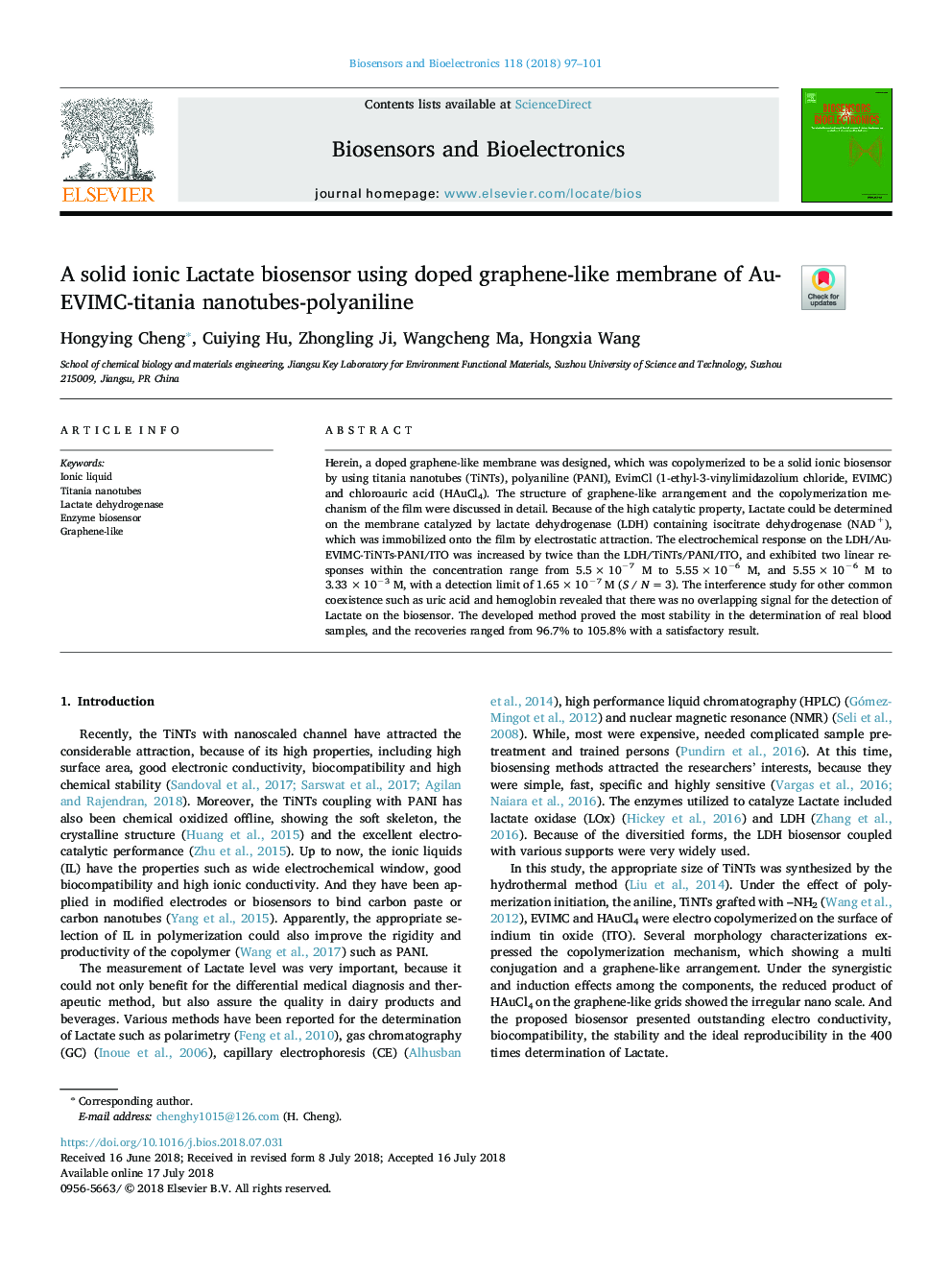| Article ID | Journal | Published Year | Pages | File Type |
|---|---|---|---|---|
| 7228949 | Biosensors and Bioelectronics | 2018 | 5 Pages |
Abstract
Herein, a doped graphene-like membrane was designed, which was copolymerized to be a solid ionic biosensor by using titania nanotubes (TiNTs), polyaniline (PANI), EvimCl (1-ethyl-3-vinylimidazolium chloride, EVIMC) and chloroauric acid (HAuCl4). The structure of graphene-like arrangement and the copolymerization mechanism of the film were discussed in detail. Because of the high catalytic property, Lactate could be determined on the membrane catalyzed by lactate dehydrogenase (LDH) containing isocitrate dehydrogenase (NAD+), which was immobilized onto the film by electrostatic attraction. The electrochemical response on the LDH/Au-EVIMC-TiNTs-PANI/ITO was increased by twice than the LDH/TiNTs/PANI/ITO, and exhibited two linear responses within the concentration range from 5.5â¯Ãâ¯10â7 M to 5.55â¯Ãâ¯10â6 M, and 5.55â¯Ãâ¯10â6 M to 3.33â¯Ãâ¯10â3 M, with a detection limit of 1.65â¯Ãâ¯10â7 M (S / Nâ¯=â¯3). The interference study for other common coexistence such as uric acid and hemoglobin revealed that there was no overlapping signal for the detection of Lactate on the biosensor. The developed method proved the most stability in the determination of real blood samples, and the recoveries ranged from 96.7% to 105.8% with a satisfactory result.
Related Topics
Physical Sciences and Engineering
Chemistry
Analytical Chemistry
Authors
Hongying Cheng, Cuiying Hu, Zhongling Ji, Wangcheng Ma, Hongxia Wang,
